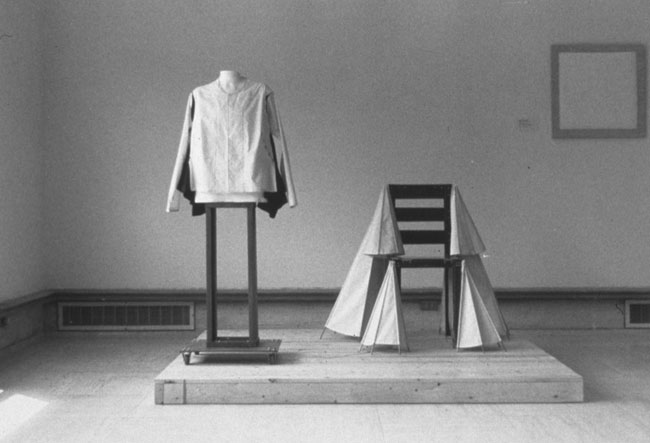The domestic realm can be defined as objects within a place that one identifies with. Comparably, the German word Stimmung describes the character or atmosphere found within the interior of a place, often revealed through personal objects. These objects can range from family pictures in the home to the landscape one defines as homeland. The following projects address objects found within the domestic interior, from clothing to furniture, transcribing and sharing the language of construction found in architecture, furniture and clothing design. In doing so, methods of construction transfer from one scale to another while simultaneously raising questions about the conventions used within each discipline.
Wing Chair
Robin Evans, the architectural historian, addresses the role of furniture traditionally being secondary to architecture in his study of 17th century drawings by the furniture makers Gillows & Co. Following conventions, architecture is represented first through plan and elevations and second through the placement of furniture. This raises the question, how can furniture become dominant in the drawing and architecture follow suit? Wing Chair challenges these conventions by reversing this hierarchy. The chair is constructed first, folding and unfolding from plan and elevation. The construction of the chair is both drawing and object, allowing furniture to be dominant and architecture having to respond. The inclusion of a dart to the chair allows the dart to enter into the language of architectural notation, whereby the chair takes priority and re-configures the floor.
House Coat
The body is contained in a series of layers from the immediate scale of clothing outward to the walls that act as a larger layer of clothing around the body. A series of coats are constructed bringing architectural drafting notations to the domestic act of sewing. Sharing the information of clothing and architecture through drawing techniques, the paper House Coat borrows text of architectural construction documents and types the construction notation of the coat onto its surface. Trace paper, used for drafting, is the coat’s fabric. This exchange of fabric to architectural trace paper offers the potential for a new architecture, one that is made through sewing.
Pocket Map Coat
The neutral landscape of a Cartesian grid allows mapping at macro and micro scales. When applied to a city, one can locate nodes of interest within the objective grid. At the scale of clothing, the grid can reveal points of interest such as pockets, buttons or a collar. Taken a step further, Pocket Map Coat hybridizes the grid and pocket to produce 138 functional pockets; each lettered and numbered like a map. As we occupy places and cities, we can locate ourselves within coordinates, whereas the Pocket Map Coat organizes and locates items associated with ourselves in an immediate set of coordinates. Items such as a wristwatch, extra coins, a pen or scraps of paper that normally get tucked into pockets or purses are now neatly tucked into any of the 138 pockets. The body now becomes the city, and our possessions located to a personal set of coordinates. |

